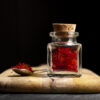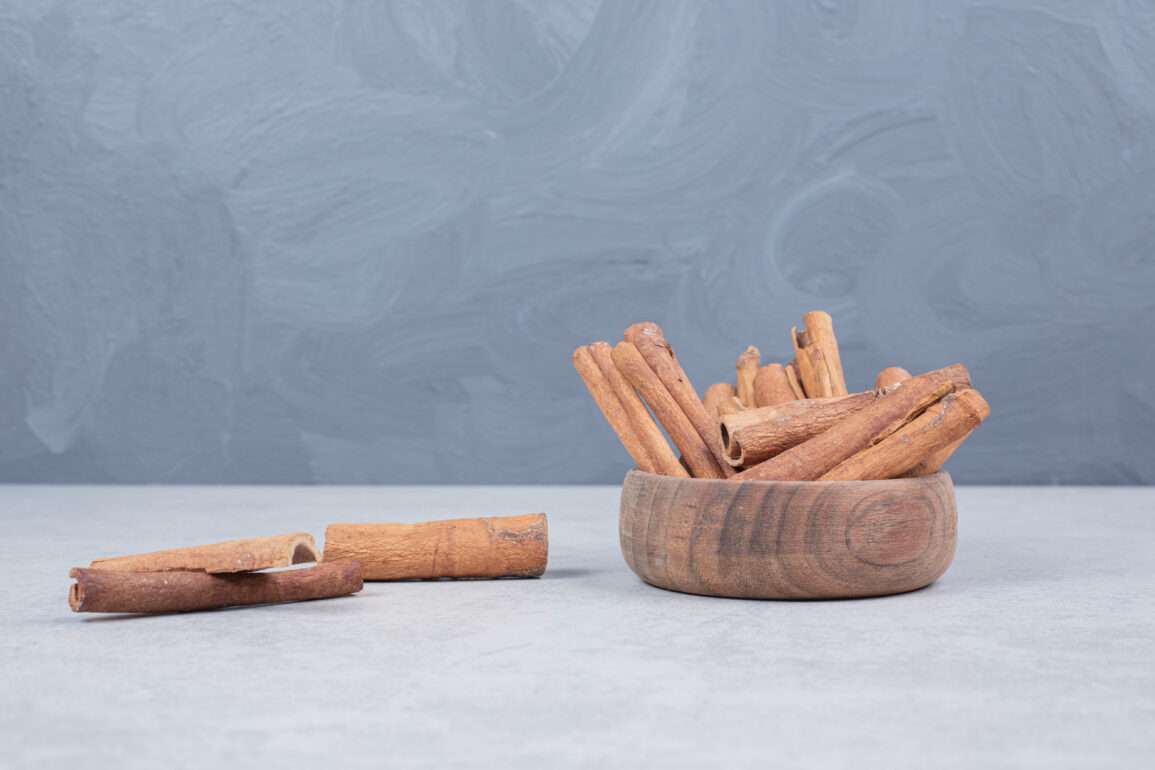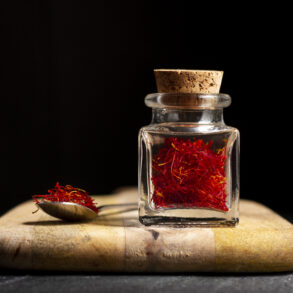Let’s talk about that one magical herb sitting quietly in your grandma’s kitchen cabinet mulethi. Also known as licorice root, mulethi has been a trusted go-to in Ayurveda and home remedies for centuries.
But what most people don’t realize is that an unsung hero in the world of skincare, particularly for tackling that stubborn hyperpigmentation.
You know the kind those uneven patches of skin that pop up after sun exposure, acne, or just randomly over time. Unlike those chemical-laden treatments that promise the moon and then leave your skin irritated, mulethi works gently but deeply.
It doesn’t bleach your skin; instead, it gradually clears up the discoloration by regulating melanin production.
Mulethi is packed with natural compounds like glabridin, which directly stops the enzyme that causes skin to darken.
The cool part? It does all this without making your skin sensitive to the sun.
That means you can use it as part of your daily routine without the constant fear of making things worse. Plus, mulethi doesn’t just target dark spots it soothes inflammation, reduces redness, and even calms down post-acne scars.
It’s like nature’s answer to chemical peels, just a lot more skin-friendly. Whether you’ve got melasma, age spots, or post-breakout marks, incorporating mulethi into your routine can make a big difference.
What’s more, it fits easily into DIY home recipes, so you don’t have to spend a fortune on serums and facials.
If you’re looking for a way to bring your glow back naturally, mulethi might just be the ingredient your skincare has been missing all this time.
Why Hyperpigmentation Happens and How Mulethi Helps
Hyperpigmentation can feel like a never-ending struggle. One day your skin is glowing, and the next, you’re noticing dark patches that seem impossible to fade.
So, what’s really going on? Hyperpigmentation occurs when your skin produces too much melanin the pigment responsible for your skin tone.
This overproduction can be triggered by several things: sun exposure, hormonal changes, acne scars, or even certain medications.
That’s where mulethi enters the scene with a powerful yet gentle approach to tackling pigmentation from its root cause.
It doesn’t just lighten the area temporarily it actually helps control melanin production over time.
Mulethi contains glabridin, which is known to block the enzyme tyrosinase.
This enzyme is crucial in melanin formation, so by blocking it, mulethi helps prevent new dark spots from forming while also gradually fading the ones you already have. Think of it like hitting the pause button on pigmentation. But that’s not all mulethi does.
It’s also anti-inflammatory, meaning it can calm down any redness or swelling associated with acne or skin irritation.
This double action calming and lightening makes mulethi especially useful for people dealing with post-inflammatory hyperpigmentation.
It’s effective for all skin types, including sensitive skin, because it doesn’t strip the skin barrier or cause peeling like retinoids often do.
When used consistently, mulethi doesn’t just fade pigmentation it improves the overall health of your skin.
Your complexion starts to even out, looks brighter, and feels smoother. And since it’s an herb, you won’t be dealing with the long list of side effects that come with many chemical treatments.
Instead, you’re giving your skin a natural solution that works harmoniously with your body.
So if you’ve been on a rollercoaster with expensive products that give you temporary results, mulethi might just be the steady, reliable friend you’ve been waiting for.
Simple Mulethi Paste for Targeting Dark Spots
If you’re just getting started with using mulethi, the most straightforward way to begin is by creating a mulethi paste.
This simple remedy requires just two ingredients and can do wonders for reducing pigmentation and evening out skin tone.
All you need is mulethi powder and rose water. Mix about one tablespoon of mulethi powder with enough rose water to form a smooth, thick paste. Make sure your face is clean before applying the paste.
Spread it evenly, especially on the areas with hyperpigmentation or discoloration.
Let it sit for 20 to 25 minutes before rinsing off with lukewarm water.
What makes this remedy so effective is its direct contact with the skin.
Mulethi goes right to work, absorbing into the epidermis and slowly altering melanin production.
Rose water, on the other hand, has soothing and hydrating properties, making the treatment gentle and refreshing.
The paste isn’t just great for the face it can also be used on the neck, elbows, or any part of the body with uneven tone.
For best results, apply the paste three to four times a week. You’ll start to notice your dark spots fading gradually, and your overall complexion looking more radiant.
This method is especially great for people with sensitive or acne-prone skin.
Unlike harsh peels or scrubs, mulethi doesn’t cause irritation or dryness. It’s a gentle solution that works beneath the surface.
Also, because mulethi is non-comedogenic, it won’t clog your pores, which is a bonus if you’re dealing with breakouts and pigmentation at the same time.
Many users find that over a month of consistent use, their skin not only looks clearer but also feels healthier and more resilient.
Mulethi truly is one of those timeless remedies that bring together tradition and science in the best possible way.
Combining Mulethi with Turmeric and Honey for Brighter Skin
Looking to take your natural skincare routine up a notch? Combine mulethi with turmeric and honey, and you’ve got yourself a powerful skin-brightening mask that targets multiple concerns at once. Turmeric brings in anti-inflammatory and antibacterial benefits, honey deeply moisturizes, and mulethi takes care of pigmentation. Together, they form a synergy that enhances each ingredient’s effects. To prepare the mask, mix one teaspoon of mulethi powder, a pinch of turmeric, and a teaspoon of raw honey. Stir well until it forms a consistent blend. Apply the mask all over your face or just on problem areas, and let it work its magic for 20 minutes before washing it off.
This combination is especially good for those who struggle with both dullness and discoloration. Turmeric helps calm inflamed skin and adds a natural glow, while honey provides hydration without making the skin greasy. Mulethi, the star of the show, quietly fades dark patches and uneven spots over time. What’s amazing about this remedy is that it suits all skin types. Whether you have oily skin, dry patches, or combination skin, this natural trio adjusts to your needs without disrupting your skin barrier.
Use this mask two to three times a week for visible improvements. The glow doesn’t just come from lighter skin—it’s the healthy, nourished look that comes when your skin is truly cared for. Over time, regular application will help reduce stubborn marks, brighten your overall tone, and give you a smooth, luminous finish. Plus, it smells lovely and feels like a little self-care ritual. When you enjoy the process, it’s easier to stay consistent—and consistency is the secret sauce when it comes to results with mulethi. It’s not just about quick fixes; it’s about healing your skin from the inside out.
Daily Mulethi Toner for Gentle, Long-Term Benefits
If you’re not a fan of messy masks or pastes, a daily mulethi toner could be your new best friend. It’s easy to make, hassle-free to apply, and can be incorporated into your routine just like any regular skincare product. To make it, boil one tablespoon of mulethi powder in 1.5 cups of water. Let it simmer for 10–15 minutes until the water is infused with the goodness of mulethi. Once it cools down, strain the liquid and store it in a clean spray bottle. You can use this homemade toner twice daily—once in the morning and once before bed—on clean skin.
This toner provides a light, non-sticky way to get all the benefits of mulethi without much effort. Over time, it helps reduce pigmentation, tightens the skin, and balances oil levels. Because it’s so mild, it’s perfect even for those with ultra-sensitive skin. Mulethi’s anti-inflammatory action means it also helps calm redness, making your skin appear more even-toned and refreshed. The toner can be refrigerated to enhance its shelf life and provide a cooling effect during hot weather. Spraying it on after sun exposure can also minimize the chances of developing new dark spots.
Consistency is key. While the toner might seem gentle, its long-term effects are powerful. You’ll notice that with regular use, your skin feels more toned, less inflamed, and visibly brighter. It’s a great way to layer mulethi benefits into your routine without adding more time or complexity. And since it’s water-based, it works well under serums or moisturizers. Adding this step to your morning and nighttime ritual not only gives your skin a boost but also reminds you to slow down and care for yourself. Mulethi, in this form, is the epitome of slow beauty—steady, nurturing, and completely worth it.
Advanced Mulethi and Multani Mitti Mask for Oily Skin
For those struggling with oily skin and persistent dark spots, mulethi combined with multani mitti (fuller’s earth) is a game-changer. This mask not only helps control excess oil but also targets pigmentation in a powerful way. To prepare this mask, mix one tablespoon of mulethi powder with one tablespoon of multani mitti. Add enough rose water or plain water to form a smooth paste. Apply this evenly over your face, focusing on pigmented areas, and leave it on for 20–25 minutes before rinsing it off with lukewarm water. You’ll notice a fresh, mattified look immediately, but the real magic happens over time.
Multani mitti helps draw out impurities, tighten pores, and gently exfoliate dead skin cells. When paired with mulethi, which works on reducing melanin production, this mask becomes a dual-action treatment for hyperpigmentation and excessive oiliness. It’s particularly helpful for those dealing with post-acne marks, which tend to darken over time if not treated. Using this mask twice a week ensures that your skin stays clean, balanced, and gradually brighter.
What sets this remedy apart is its ability to deliver results without causing dryness. While multani mitti alone can sometimes be drying, mulethi balances it out by offering hydration and calming properties. This makes the mask suitable even for combination skin types. If your skin tends to break out under stress, this blend can serve as both a preventive and corrective solution. The regular use of this mask can visibly improve your skin’s texture and tone within a few weeks. With consistent application, mulethi gradually breaks down pigmentation clusters, and the exfoliating action of multani mitti speeds up skin renewal. It’s a naturally effective formula that deserves a permanent spot in your skincare routine.
Mulethi Milk Decoction for Inner Skin Health
While topical treatments work wonders, supporting your skin from the inside is just as important. That’s where the ancient practice of drinking mulethi milk decoction comes into play. This isn’t just a trend—it’s rooted in traditional Ayurvedic medicine, and it’s surprisingly easy to make at home. To prepare, boil a cup of milk and add a teaspoon of mulethi powder. Let it simmer on low heat for about 10 minutes. Strain and drink it warm, preferably at night before bed. This soothing drink can be taken three to four times a week to support internal cleansing and enhance skin clarity.
Why drink mulethi? Because your skin reflects what’s going on inside your body. Toxins, hormonal imbalance, and digestive issues can all contribute to hyperpigmentation. Mulethi, when consumed internally, helps detoxify the liver, balance hormones, and reduce internal inflammation—all of which play a role in skin clarity. The milk adds nourishment and serves as a carrier for mulethi’s properties, making the decoction more bioavailable. Over time, this internal support helps your skin appear naturally brighter, clearer, and more even-toned.
Of course, it’s important to consume mulethi in moderation. Too much can affect blood pressure or potassium levels, so stick to small doses a few times a week. The best part is that this method is completely natural and doesn’t involve any synthetic supplements or medications. It’s a slow and steady approach, but one that brings lasting results. Combined with topical application, this creates a holistic skincare plan that treats pigmentation from both ends—inside and out. If you’re looking for a sustainable way to boost your skin’s natural glow, sipping on mulethi milk might just be your new nighttime ritual.
Spot Treatment with Mulethi and Aloe Vera Gel
Sometimes, you need a quick fix—something you can dab on a stubborn dark spot without applying a full face mask. This is where a targeted spot treatment using mulethi and aloe vera gel shines. Take half a teaspoon of mulethi powder and mix it with one teaspoon of pure aloe vera gel. Blend until smooth and apply directly to the affected spots using a clean fingertip or a cotton swab. Leave it on overnight and rinse in the morning. This spot remedy can be applied daily and works best when used as part of a consistent routine.
This blend works incredibly well because both mulethi and aloe vera offer unique yet complementary benefits. While mulethi targets melanin production and helps fade pigmentation, aloe vera soothes the skin, speeds up cell turnover, and prevents dryness. This combo is ideal for people with sensitive or acne-prone skin who can’t tolerate stronger ingredients like retinol or acids. It’s gentle enough for daily use and can even be layered under a moisturizer for added effect.
You don’t need to wait weeks to notice the soothing effect. Even after the first few applications, you may find that the redness and inflammation around the dark spot begin to subside. Within a few weeks, with regular application, the pigmentation itself starts to fade. This targeted approach is efficient and can be tailored to fit into any skincare regimen. It’s also budget-friendly, easy to make, and doesn’t involve complicated ingredients or fancy equipment. Mulethi’s slow but sure approach is what makes it reliable—and when paired with aloe vera, it becomes a powerful little potion against stubborn dark patches.
Mulethi and Yogurt Pack for Deep Nourishment
Skin that’s suffering from hyperpigmentation often needs more than just brightening—it needs nourishment and healing, too. A rich, creamy face pack made with mulethi and yogurt can deliver both. This pack deeply hydrates, restores glow, and gradually fades discoloration. To prepare it, mix one tablespoon of mulethi powder with two tablespoons of plain yogurt. Apply this thick, creamy mixture generously over your face and neck. Let it sit for 25 to 30 minutes, then rinse with cool water. For best results, use this pack two to three times a week.
Yogurt is a natural source of lactic acid, which gently exfoliates the skin, helping to remove dead cells that might be contributing to a dull appearance. Meanwhile, mulethi works behind the scenes, gradually reducing the melanin that causes those stubborn patches. The beauty of this combo is its dual action: exfoliating and healing at the same time. It’s perfect for people with normal to dry skin, especially if you find that most pigmentation treatments leave your face feeling tight or flaky.
This pack is like comfort food for your skin. It calms irritation, moisturizes deeply, and promotes a fresh, dewy look. And since the ingredients are readily available in most kitchens, you can whip this up anytime your skin feels tired or dull. With regular use, not only will pigmentation begin to fade, but your skin will feel softer, more resilient, and visibly brighter. This remedy reflects the best of home-based skincare—simple, effective, and completely natural. Mulethi in this form feels luxurious yet accessible, making your skincare ritual something to look forward to rather than just another task.
How to Make Mulethi Part of Your Weekly Routine
Adding mulethi to your skincare doesn’t have to be overwhelming. The key is to create a weekly plan that’s easy to follow and suits your skin’s needs. Here’s a sample mulethi skincare routine you can customize:
- Monday: Apply mulethi and rose water paste as a face mask.
- Tuesday: Use mulethi toner morning and night.
- Wednesday: Apply the mulethi, turmeric, and honey mask.
- Thursday: Spot treat with mulethi and aloe vera gel.
- Friday: Drink warm mulethi milk at night.
- Saturday: Use the multani mitti and mulethi mask.
- Sunday: Apply the yogurt and mulethi nourishing pack.
This plan balances between masks, toners, spot treatments, and internal care. You’re not overloading your skin, but you’re giving it regular doses of the herb in different forms. Consistency, as always, is the magic word here. Mulethi doesn’t promise instant results, but what it does offer is real, sustainable change. By giving it time to work naturally, you’re allowing your skin to heal and regenerate the right way.
Tracking your skin’s progress weekly can be helpful. Take photos, notice texture changes, and adjust the routine if needed. If you find your skin needs more moisture, swap rose water with milk. If it feels congested, add steam before applying the mask. Mulethi is incredibly adaptable, which makes it perfect for personalized skincare. When used as part of a routine, it doesn’t just treat pigmentation—it helps maintain long-term skin health, leaving you with a naturally glowing and even-toned complexion.
Common Mistakes People Make When Using Mulethi
Mulethi is undoubtedly a powerful herb, but like any skincare remedy, it needs to be used correctly to yield the best results. One of the most common mistakes people make is expecting instant results. Unlike chemical treatments, mulethi works gradually. It targets the deeper layers of skin and slowly regulates melanin production. If you expect visible results within two or three days, you’re setting yourself up for disappointment. Mulethi is not a quick fix—it’s a commitment. Most users start seeing subtle changes after a few weeks of consistent application, and significant fading of pigmentation may take up to two months or more.
Another mistake is using mulethi without doing a patch test. While it’s generally well-tolerated, everyone’s skin reacts differently to natural ingredients. Applying it directly without checking for sensitivity could lead to irritation, especially if you have very reactive skin. A simple patch test on your wrist or behind the ear can save you from unwanted reactions. Then there’s the mistake of overusing it. People often think that applying mulethi more frequently or leaving it on for longer than recommended will speed up results. In reality, overuse can dry out the skin or disrupt its natural balance. Stick to the recipe and schedule—more isn’t always better.
Mixing mulethi with incompatible ingredients is another pitfall. Avoid combining it with strong acids, chemical exfoliants, or retinoids. These can neutralize mulethi’s benefits or irritate the skin. If you’re layering skincare products, make sure there’s at least a 20-minute gap between your mulethi treatment and other active ingredients. Lastly, some people skip sun protection after using mulethi. Even though mulethi doesn’t increase sun sensitivity, the healing skin still needs protection. Always wear sunscreen during the day, especially when treating pigmentation. Remember, using mulethi is like planting a seed—if you’re patient, nourish your skin, and give it time, you’ll see something truly beautiful bloom.
Who Should Avoid Mulethi and When to Be Cautious
While mulethi is a gentle and natural remedy, it’s not for everyone. Knowing when to avoid it—or when to use it with caution—can help prevent complications. One of the biggest red flags is if you’re allergic to plants in the legume family. Though rare, some people may experience allergic reactions to mulethi, especially if taken internally. That’s why doing a patch test is essential before applying it to your face. If you’re planning on drinking mulethi tea or decoction for internal detox, consult your doctor—especially if you’re on medication or have underlying health conditions.
Mulethi may affect potassium levels and blood pressure when consumed in large quantities. People with hypertension, heart conditions, or kidney disorders should be cautious about using it orally. It can also interfere with hormone levels, which means pregnant and breastfeeding women should avoid internal consumption unless advised by a healthcare provider. Even though topical application is generally safe, overuse could lead to dryness, especially in people with already dry or sensitive skin. That’s why pairing mulethi with hydrating ingredients like yogurt, honey, or aloe vera is recommended.
Also, if you’re currently undergoing chemical peels, laser treatments, or using strong prescription products like hydroquinone or tretinoin, adding mulethi to your routine might overload your skin. Give your skin a break before switching over to natural remedies. Think of mulethi as a treatment you use during calm periods in your skincare routine—not in the middle of an aggressive treatment cycle. By using mulethi responsibly and mindfully, you can enjoy its benefits without the risks. It’s not about fearing the herb—it’s about understanding its nature and respecting its boundaries.
Realistic Timeline: How Long Mulethi Takes to Show Results
One of the most frequently asked questions about mulethi is: how long does it take to work? The answer isn’t black and white, but it’s definitely worth exploring. Mulethi isn’t a miracle overnight solution. Instead, it’s a consistent performer that requires time and dedication. In most cases, people begin to notice mild improvements in their skin tone within 2–3 weeks of regular use. The initial changes might include reduced redness, less inflammation, and a slight brightening of overall complexion. This phase is subtle but promising.
Between 4 to 6 weeks, more noticeable changes occur. Pigmented spots begin to fade, your skin starts to look more even-toned, and the overall clarity improves. This is the sweet spot where many start getting compliments about their glow. Beyond 6 weeks, the results become more visible. Mulethi continues to suppress melanin overproduction, and you’ll likely see a significant difference in stubborn hyperpigmentation, including old acne marks or sunspots. But for deep, dermal-level pigmentation like melasma, it might take up to 10–12 weeks to witness real transformation.
The most important factor? Consistency. If you’re using mulethi haphazardly—once a week, skipping days, or constantly switching recipes—you won’t get the full benefit. Choose one or two methods that suit your skin, stick with them, and be patient. Taking progress photos every two weeks can be a great motivator, helping you track the subtle changes mulethi brings. Remember, natural healing isn’t a sprint—it’s a slow, beautiful journey. When you commit to mulethi with intention and consistency, it rewards you with results that are long-lasting and genuinely restorative.
Complete Table: Different Mulethi Remedies at a Glance
Here’s a quick reference table that breaks down popular ways to use mulethi, how often to use them, and what skin concerns they target.
| Remedy | Ingredients | Frequency | Targets |
|---|---|---|---|
| Mulethi + Rose Water Paste | Mulethi powder, rose water | 3–4 times/week | General hyperpigmentation |
| Mulethi + Turmeric + Honey Mask | Mulethi powder, turmeric, honey | 2–3 times/week | Dark spots, dullness, acne scars |
| Mulethi Toner | Mulethi boiled water | Daily (AM & PM) | Daily tone, evenness, hydration |
| Mulethi + Multani Mitti Mask | Mulethi powder, multani mitti, rose water | 2 times/week | Oily skin, post-acne pigmentation |
| Mulethi + Aloe Vera Spot Gel | Mulethi powder, aloe vera gel | Daily | Individual dark spots, redness |
| Mulethi + Yogurt Pack | Mulethi powder, yogurt | 2–3 times/week | Dry skin, overall nourishment |
| Mulethi Milk Decoction (Drink) | Mulethi powder, warm milk | 3–4 times/week | Internal detox, hormonal balance |
This table gives you a snapshot of how versatile mulethi is. Whether you’re targeting one stubborn spot or an overall uneven tone, there’s a remedy that fits. You can also mix and match based on your skin’s current condition. Just remember, the real secret lies in regular use and trusting the process.
Advantages and Disadvantages of Using Mulethi for Skin
Let’s wrap this section up with a complete breakdown of mulethi’s pros and cons so you can make informed decisions about adding it to your skincare.
Advantages:
- Natural melanin regulator without harsh bleaching
- Rich in antioxidants and anti-inflammatory agents
- Suitable for sensitive skin and non-comedogenic
- Multiple application forms: masks, toners, drinks
- Calms irritation while brightening tone
- Affordable and accessible
- Can be combined with other natural ingredients
- Long-term results without dependency
Disadvantages:
- Results take time—no quick fixes
- Can dry out skin if overused or used alone
- May not be suitable for people with hormone or blood pressure issues (when ingested)
- Needs consistency to show noticeable effects
- Overuse might cause skin imbalance or mild irritation
- Requires proper preparation—cannot be stored for long
- Limited shelf life in natural form
- Might not fully replace professional treatments for severe pigmentation
Mulethi is not a miracle product, but it is a miraculous herb when used properly. The balance between its benefits and minor limitations makes it an excellent long-term solution for anyone looking to treat pigmentation naturally. When used with care, mulethi becomes more than a skin remedy—it becomes part of a lifestyle of gentle healing.
Conclusion: Embrace Mulethi as Your Skin’s Best Friend
If you’ve been battling stubborn pigmentation, uneven skin tone, or lingering acne marks, mulethi could be the game-changer your routine has been missing. It’s not a trendy product pushed by marketing gimmicks. It’s a time-tested herb that works in harmony with your skin to restore clarity, brightness, and balance. Whether you’re using it in masks, toners, spot treatments, or as an internal tonic, mulethi brings a holistic approach to skincare that respects your skin’s natural rhythm.
The journey with mulethi requires consistency, patience, and care—but the rewards are completely worth it. It doesn’t just give your skin a temporary glow; it works on a deeper level, fading pigmentation, calming inflammation, and enhancing overall health. Mulethi is versatile, gentle, and powerful all at once. With so many easy-to-make recipes, from yogurt masks to overnight gels, it fits seamlessly into any skincare lifestyle. You don’t need expensive serums or fancy spa treatments—just some mulethi, a few kitchen ingredients, and a little time.
Remember, skincare isn’t just about treating problems. It’s about nourishing, protecting, and cherishing your skin. Mulethi lets you do all three, naturally. So, whether you’re applying it weekly in a face mask or sipping it as part of your bedtime routine, you’re taking a step toward more balanced, radiant skin. Trust the process, stay consistent, and let mulethi unveil your true glow—gently and gracefully.
FAQs
1. Can I use mulethi every day on my skin?
Yes, mulethi can be used daily, especially in diluted forms like toners or spot treatments. For masks, two to three times a week is usually sufficient. If you’re new to using mulethi, start slow and observe how your skin responds.
2. How long should I leave mulethi paste on my face?
For most mulethi-based face masks, 20 to 25 minutes is ideal. This gives enough time for the active ingredients to absorb into the skin without drying it out or causing irritation. Always rinse with lukewarm water and follow up with a gentle moisturizer.
3. Does mulethi work for all skin types?
Absolutely. Mulethi is gentle enough for sensitive skin, effective on oily skin when paired with ingredients like multani mitti, and nourishing for dry skin when mixed with yogurt or milk. Its versatility is one of its biggest strengths.
4. Can I store mulethi remedies for later use?
It depends on the form. Mulethi toners can be refrigerated and used for up to one week. However, fresh pastes or masks should ideally be made and used on the same day for maximum effectiveness and hygiene.
5. Will mulethi remove pigmentation completely?
Mulethi significantly reduces pigmentation and evens out skin tone over time, especially with consistent use. While it may not completely erase very deep or dermal pigmentation, it can drastically improve the overall appearance and brightness of the skin.










